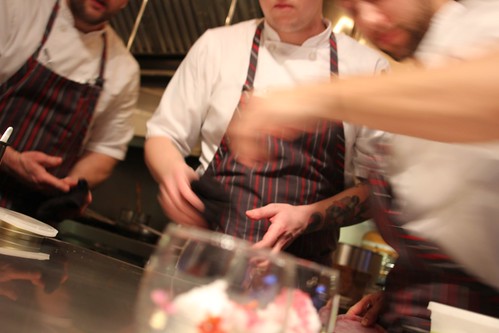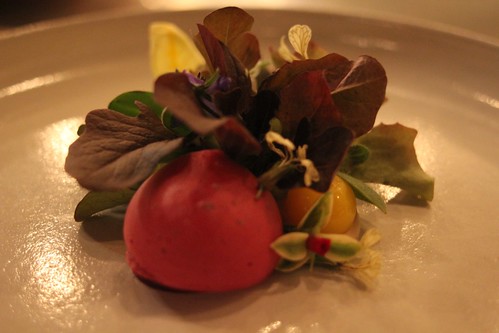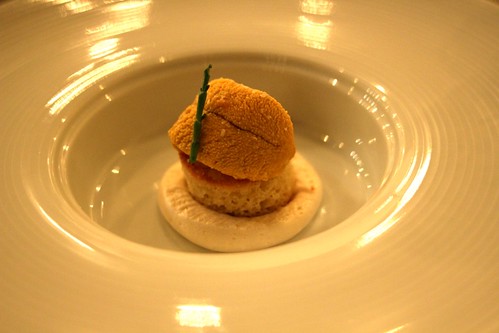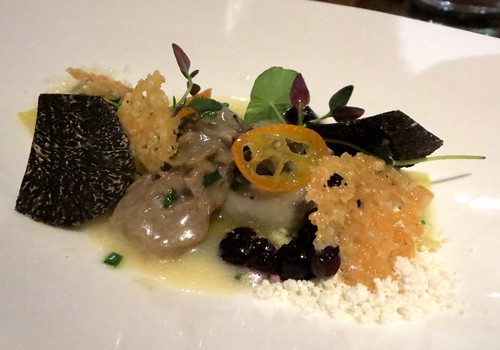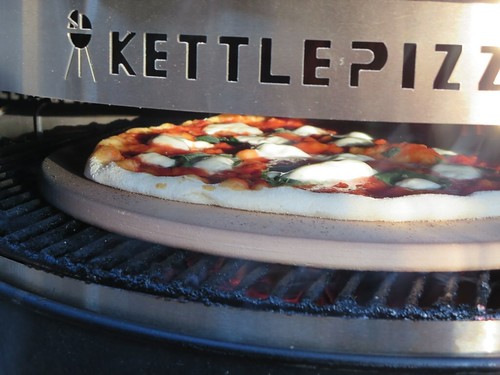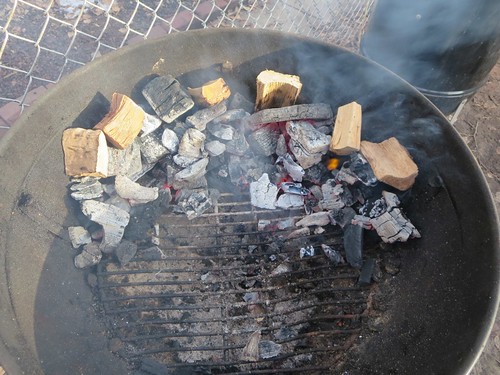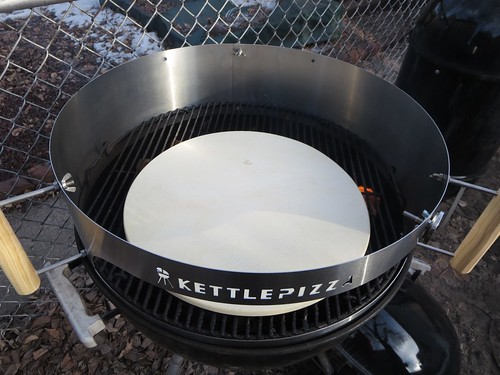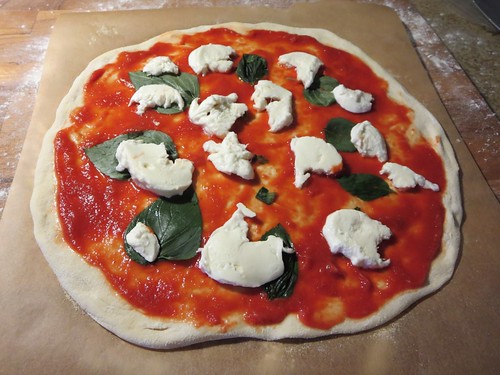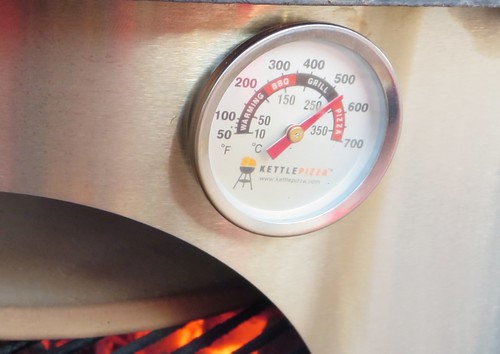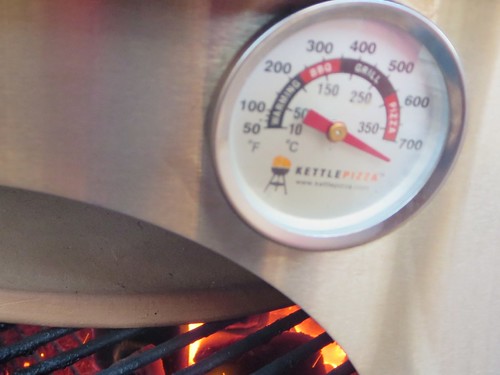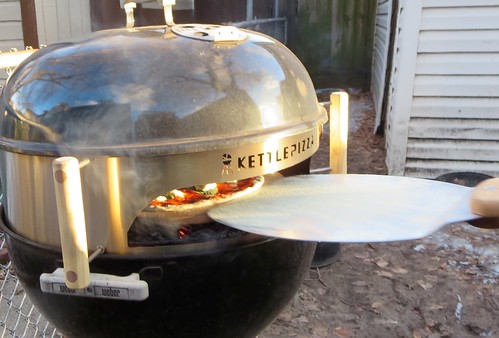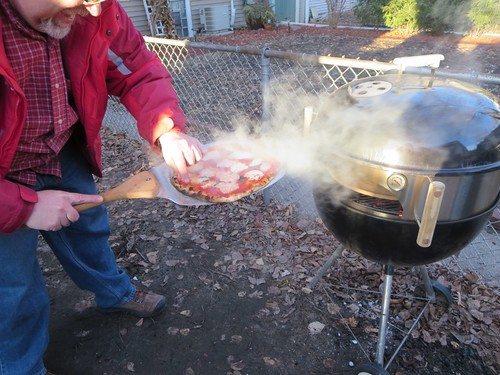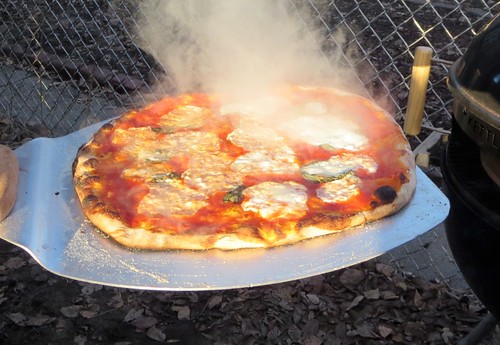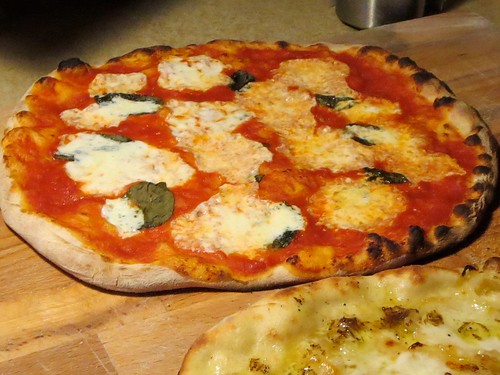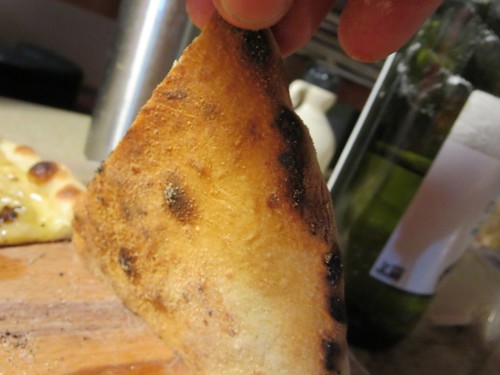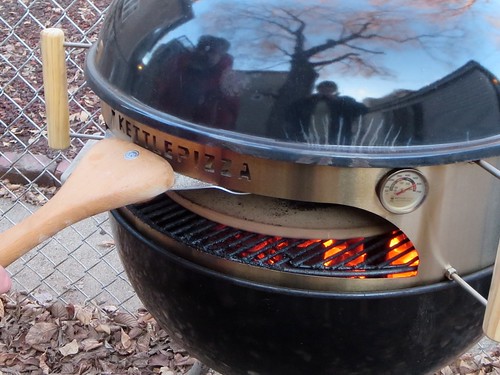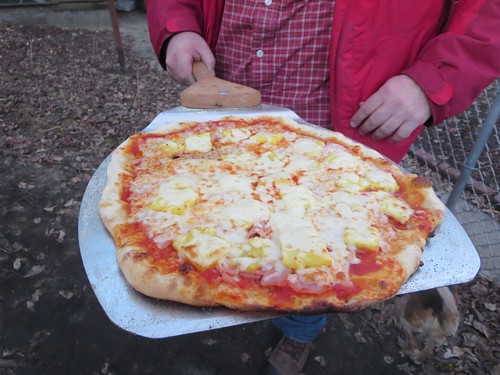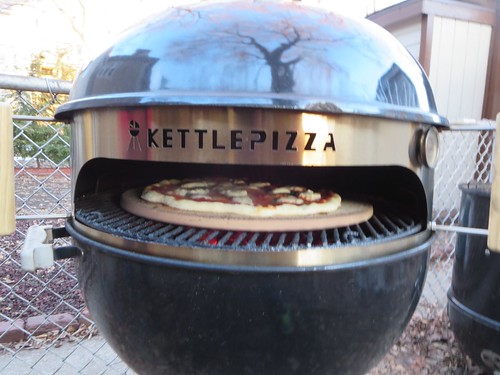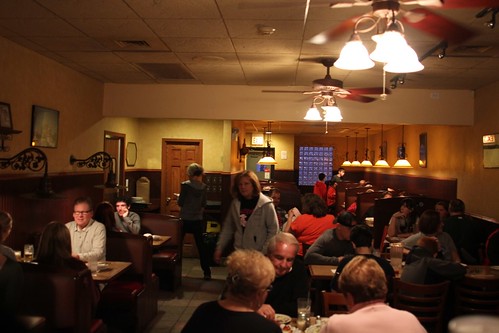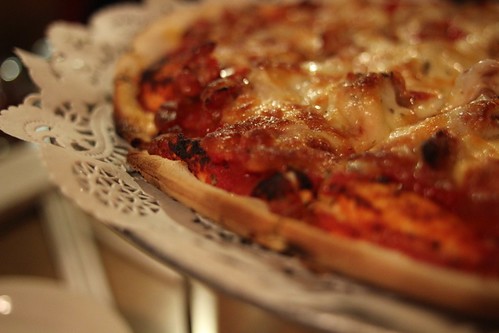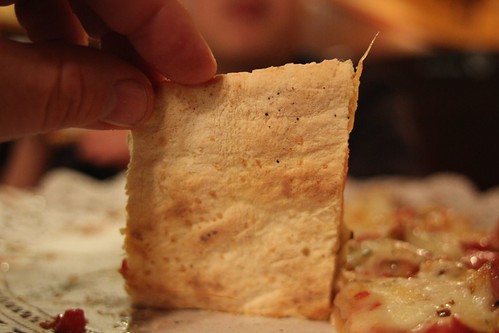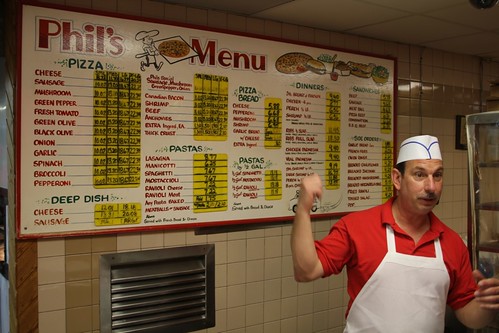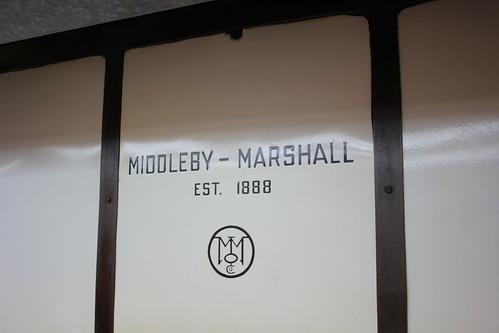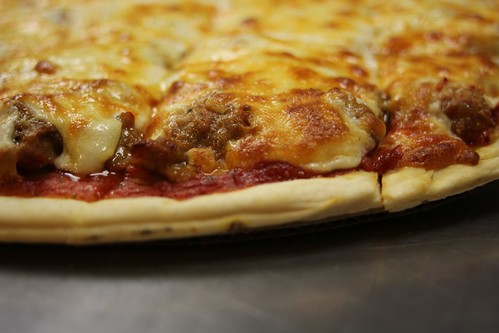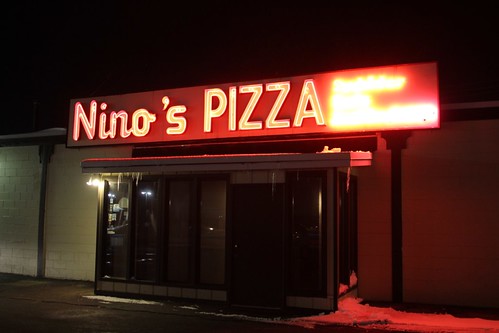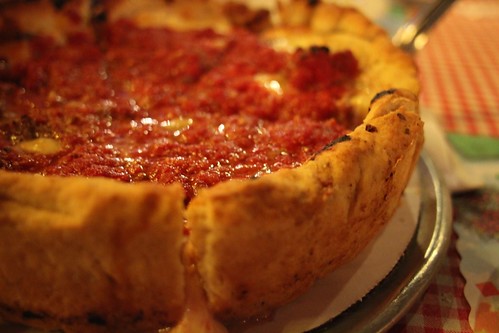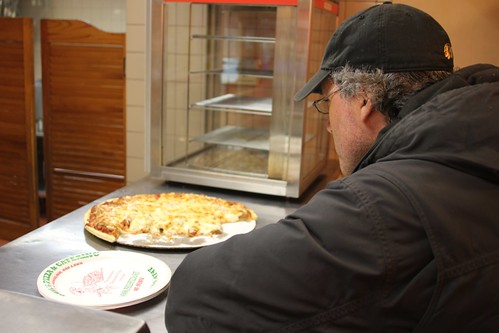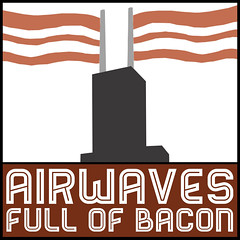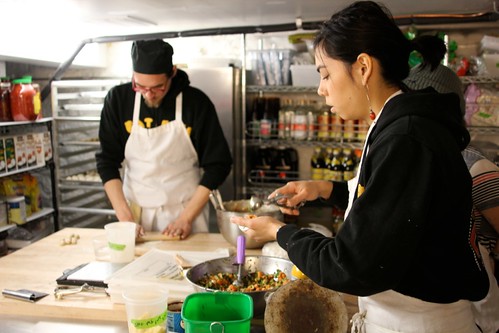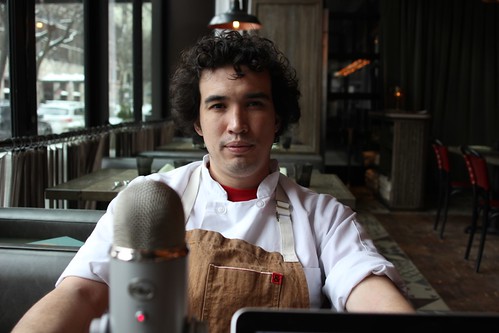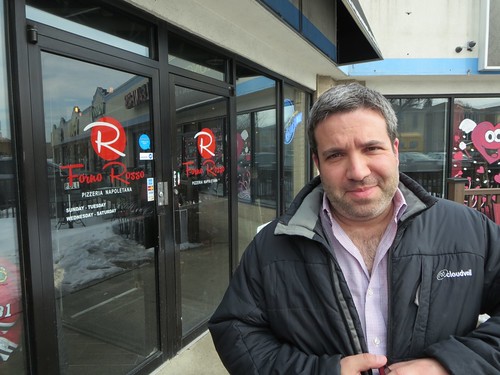The estimable Alan Richman has a piece up in which he decries a new tendency toward what he calls egotarian dining experiences. What is that exactly? Well, I’m not sure by the end and I’m not sure he is either, which I think is an honest reflection of his conflict. Basically he wants to disapprove of chefs who do too weird things, too egotistically show-offy things… and, it seems, too Redzepi-influenced things full of twigs and bizarre combinations. The problem with his piece is that he keeps having to acknowledge that some of it is pretty great.
What we have, it seems to me, is a movement that’s letting chefs just put themselves and their influences and their journey of personal discovery out there, almost uninhibited by normal commercial concerns. And so, guess what? Give chefs their heads and somewhere some of them turn out to be fatuous blowhards who forgot to make it taste good, or forgot that people might not want a pig’s blood tree moss pudding. (That’s never happened in a glitzy downtown spot, of course. Well, the blood moss pudding hasn’t, anyway.) Yet when I think of what we have in Chicago that kind of resembles what he describes, I can’t think of any place currently operating that landed on that side of the tightrope. We have by now a small movement of these experiential restaurants where the chef is on stage and you’re the participatory audience, and so far, to put it bluntly… none of them suck. None of them are full of crap. They’re all pretty wonderful, really, each in a way that could only come from that chef. (We also have, in Iliana Regan, what Richman says this movement never has: “Not once have I seen a female chef prepare such food.”)
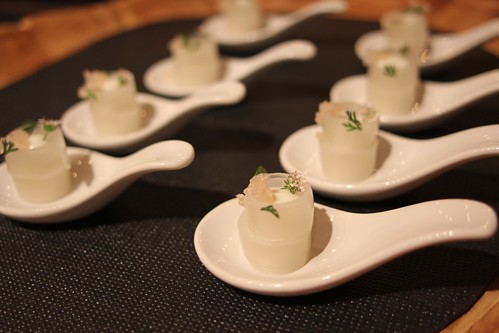
Tom yum soup in coconut noodle.
Maybe we’re just lucky, but anyway, that brings me to 42 Grams, the new restaurant version of Sous Rising, the underground restaurant I wrote about (and mostly loved) here. I don’t have a lot to add to what I said then; the restaurant version hasn’t traveled far from the underground version in either distance (it’s downstairs from their apartment) or approach, though I do think the increase to full-time service has, unsurprisingly, sharpened technique and the menu, and I thought the lesser courses had mostly gone away (one came back in a new context, but I’ll get to that in a moment).
Chef Jake Bickelhaupt is young and his influences can be picked out— especially when he does a classic El Bulli trick (the espresso espuma that you can turn upside down and not spill… which I saw Ferran Adria demonstrate two days later). But where the young chef who overuses powders and gels is becoming a cliché (more than one chef has said to me some version of “They want to make molecular cuisine before they know how to roast a chicken”), Bickelhaupt has technology under his control and doesn’t forget to make things taste good. The “espresso” comes as a scene change into dessert, just as the meal started with the wit of a gelled cocktail, but what’s in between is mostly simpler, less visibly tricky, and focused on the simplicity of a star ingredient— meltingly sweet and gentle uni on a circle of brioche with maple cream underneath, sushi meeting biscuits and gravy; or the flavors of tom yum soup curled up inside a coconut noodle. Inventiveness is almost entirely in the service of producing delight.
One time it wasn’t at Sous Rising was with an intense peccorino romano crisp which, I wrote, “sort of crossed the line from cheese smell to puke smell.” It is a rule, of course, that if you write 1000 words of praise the chef will only remember the criticism in passing. At a bigger restaurant that might just mean him muttering to his staff that “Hey, Mr. Puke Smell is in tonight.” But much of the point of 42 Grams is that you’re right there with Bickelhaupt, his wife Alexa and the two cooks helping him; she’s taking you through it course by course and the cooks, though focused on the task at hand, are right there too. So one course was introduced by way of telling the story of a writer who came in and said a dish smelled like puke. So I was offered a new (and frankly much better) variation, the Flaming Hot Cheetos version, while the others got the regular one.
And this to me is why this kind of dining is so much fun, such a magical experience well worth the cost (you are basically getting a private chef experience for eight people). The egotarian chef of Richman’s piece probably would have banned him for saying that, refused to serve him cured lichen ever again, but in Chicago it’s playful and intimate and theatrical and about having a party, not giving a symposium. So the food critic stings with words, and they respond in food.
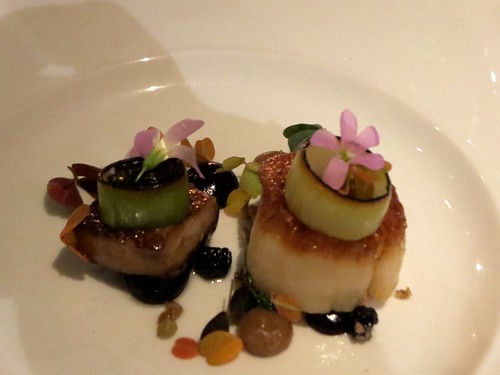
Foie and scallop with blueberry and oxalis at Senza.
Barely a week later I went to Senza, which is known for two things: it’s gluten free, and the chef, Noah Sandoval, had worked at Schwa (actually, he was in the Key Ingredient video we shot there). Which potentially meant a third thing: a rare serious restaurant somewhere near the cutting edge, in Lakeview where restaurants are rarely serious and never cutting edge.
So after 42 Grams, maybe that’s cutting edge for Lakeview. It is a tasting menu, and it has some very fine courses with a lot of creative (but not egotarian!) touches, but I wouldn’t put it out as far as Schwa in terms of wild-ass crazy creativity— no chocolate and parsnip desserts. As for the gluten free, that’s a complete success— most of the meal you simply don’t think about the absence of anything, and the few things that are clear gluten-free substitute dishes— a loaf of surprisingly convincing black bread, a terrific agnolotti, a chocolate cake— were entirely satisfying; you never had to squint to convince yourself something was good. The agnolotti, in fact, was maybe the best dish, a melt in your mouth texture with the combination of lushness (a truffle slice, a parmesan crisp) and bright fruit (kumquat, huckleberry) that was a consistent approach throughout the meal.
Other standouts included a lamb dish with both tender loin and a gamier chunk of belly, and a dessert— the kind that Richman describes as horse feed— in which oatmeal was joined with bright fruit flavors, pine nut foam and a meringue stick (I think it was meant to evoke something classic on a stick but I can’t figure out what now). Service was attentive and neighborhoody in the best sense, welcoming as if you were someone they’d expect to run into around the neighborhood. And it included one thing that floored me at the time, though in retrospect it makes perfect sense from their point of view of keeping a tasting menu on track. They don’t have valet parking and the best I could find was a two-hour spot two blocks away. When I needed to go feed the meter, they took down the location and description of my car, and someone ran out and fed it for me.
One more I’ve been to lately:
Analogue. Everybody loves this new Logan Square bar with an oh-so-hip unmarked entrance, and is praising their Cajun food as the best ever. I think they’ve been drinking! Okay, I’m not dissing it. It was pretty good. I went early on a Tuesday– one of those times when the bar is so empty that having the lights so low seems kind of silly; you just want to say, go ahead and turn a light on so you can see your work, folks. Anyway, I liked the drinks quite well, and I liked the Cajun food fine. The biscuits are genuinely great. The gumbo was good and had pretty good depth of flavor. The fried chicken sandwich was hard to judge because it was drowned in too much one-dimensional hot sauce, and on boring white bread; I was more impressed by Parson’s handling of such classic Southern stuff. So, as a non-barfly who ate early in my drinking, I find it kind of wildly overhyped by some— but that said, compared to the boring burger bar I just had open near me, I admire its ambition and the food is certainly above average for the genre. So this isn’t a diss, just a tempering of expectations. No need to serve me a Flaming Hot Cheeto next time I come in, which I will.
Tags: 42 Grams, Analogue, Senza

 Posted in
Posted in 
